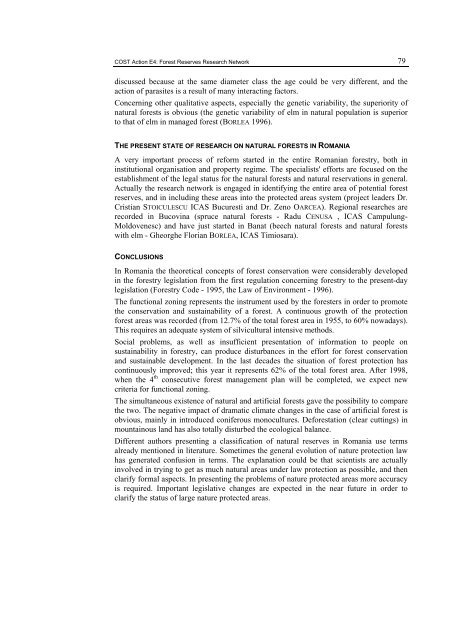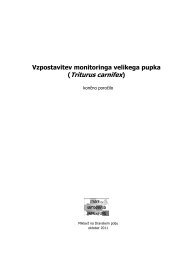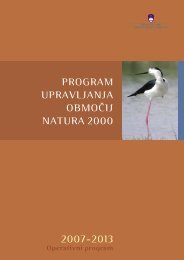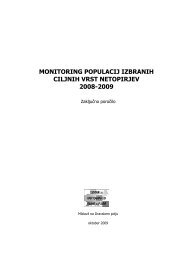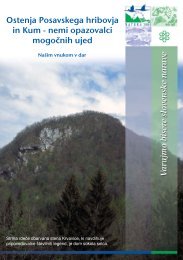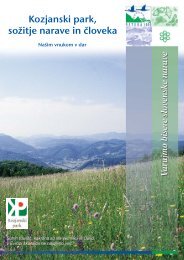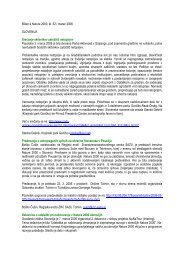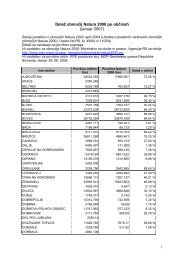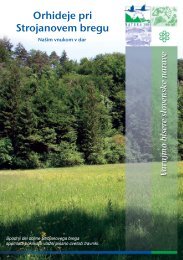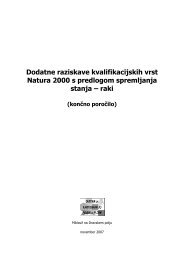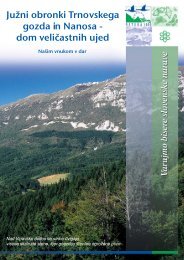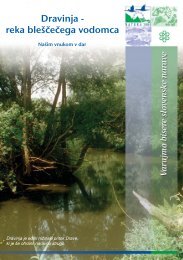VIRGIN FORESTS AND FOREST RESERVES IN ... - Natura 2000
VIRGIN FORESTS AND FOREST RESERVES IN ... - Natura 2000
VIRGIN FORESTS AND FOREST RESERVES IN ... - Natura 2000
Create successful ePaper yourself
Turn your PDF publications into a flip-book with our unique Google optimized e-Paper software.
COST Action E4: Forest Reserves Research Network 79<br />
discussed because at the same diameter class the age could be very different, and the<br />
action of parasites is a result of many interacting factors.<br />
Concerning other qualitative aspects, especially the genetic variability, the superiority of<br />
natural forests is obvious (the genetic variability of elm in natural population is superior<br />
to that of elm in managed forest (BORLEA 1996).<br />
THE PRESENT STATE OF RESEARCH ON NATURAL <strong><strong>FOREST</strong>S</strong> <strong>IN</strong> ROMANIA<br />
A very important process of reform started in the entire Romanian forestry, both in<br />
institutional organisation and property regime. The specialists' efforts are focused on the<br />
establishment of the legal status for the natural forests and natural reservations in general.<br />
Actually the research network is engaged in identifying the entire area of potential forest<br />
reserves, and in including these areas into the protected areas system (project leaders Dr.<br />
Cristian STOICULESCU ICAS Bucuresti and Dr. Zeno OARCEA). Regional researches are<br />
recorded in Bucovina (spruce natural forests - Radu CENUSA , ICAS Campulung-<br />
Moldovenesc) and have just started in Banat (beech natural forests and natural forests<br />
with elm - Gheorghe Florian BORLEA, ICAS Timiosara).<br />
CONCLUSIONS<br />
In Romania the theoretical concepts of forest conservation were considerably developed<br />
in the forestry legislation from the first regulation concerning forestry to the present-day<br />
legislation (Forestry Code - 1995, the Law of Environment - 1996).<br />
The functional zoning represents the instrument used by the foresters in order to promote<br />
the conservation and sustainability of a forest. A continuous growth of the protection<br />
forest areas was recorded (from 12.7% of the total forest area in 1955, to 60% nowadays).<br />
This requires an adequate system of silvicultural intensive methods.<br />
Social problems, as well as insufficient presentation of information to people on<br />
sustainability in forestry, can produce disturbances in the effort for forest conservation<br />
and sustainable development. In the last decades the situation of forest protection has<br />
continuously improved; this year it represents 62% of the total forest area. After 1998,<br />
when the 4 th consecutive forest management plan will be completed, we expect new<br />
criteria for functional zoning.<br />
The simultaneous existence of natural and artificial forests gave the possibility to compare<br />
the two. The negative impact of dramatic climate changes in the case of artificial forest is<br />
obvious, mainly in introduced coniferous monocultures. Deforestation (clear cuttings) in<br />
mountainous land has also totally disturbed the ecological balance.<br />
Different authors presenting a classification of natural reserves in Romania use terms<br />
already mentioned in literature. Sometimes the general evolution of nature protection law<br />
has generated confusion in terms. The explanation could be that scientists are actually<br />
involved in trying to get as much natural areas under law protection as possible, and then<br />
clarify formal aspects. In presenting the problems of nature protected areas more accuracy<br />
is required. Important legislative changes are expected in the near future in order to<br />
clarify the status of large nature protected areas.


